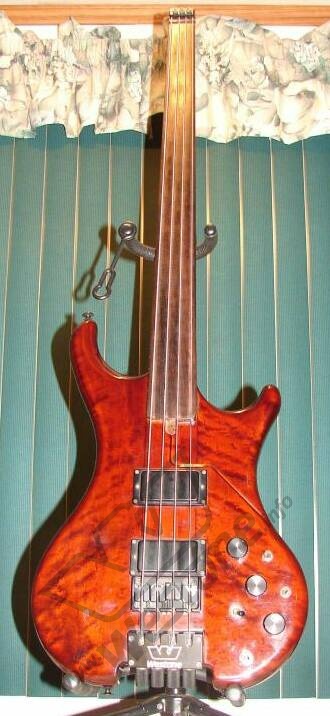Hi all,
I just bought a (very) used Westone Super Headless bass. The bird's eye maple top gave me huge GAS. It sounds great and plays easily, but has quite a lot of fret buzz, especially above the 12th fret. I'm wondering if the neck needs adjusted.
If I hold a string down at the 1st and 12th frets, I can see at least 1/16" of relief around the 7th fret. If I hold it down at the 12th and 24th, there is practically no relief. Most of the relief appears around the 5th to 8th fret area, and it almost seems to get less again past the 12th fret. Sighting down the fretboard, the neck shows no signs of warpage or sprung frets. However, the frets are all pretty worn.
Is this normal? I cranked the truss rod up a little, but it didn't seem to make any great difference, so I thought I would check with you guys before I crank it up more and break it How much relief should a bass neck have? Where should it be? Should I leave the truss rod alone and raise the action at the bridge?
How much relief should a bass neck have? Where should it be? Should I leave the truss rod alone and raise the action at the bridge?
Thanks
Steve
I just bought a (very) used Westone Super Headless bass. The bird's eye maple top gave me huge GAS. It sounds great and plays easily, but has quite a lot of fret buzz, especially above the 12th fret. I'm wondering if the neck needs adjusted.
If I hold a string down at the 1st and 12th frets, I can see at least 1/16" of relief around the 7th fret. If I hold it down at the 12th and 24th, there is practically no relief. Most of the relief appears around the 5th to 8th fret area, and it almost seems to get less again past the 12th fret. Sighting down the fretboard, the neck shows no signs of warpage or sprung frets. However, the frets are all pretty worn.
Is this normal? I cranked the truss rod up a little, but it didn't seem to make any great difference, so I thought I would check with you guys before I crank it up more and break it
 How much relief should a bass neck have? Where should it be? Should I leave the truss rod alone and raise the action at the bridge?
How much relief should a bass neck have? Where should it be? Should I leave the truss rod alone and raise the action at the bridge?Thanks
Steve



Comment